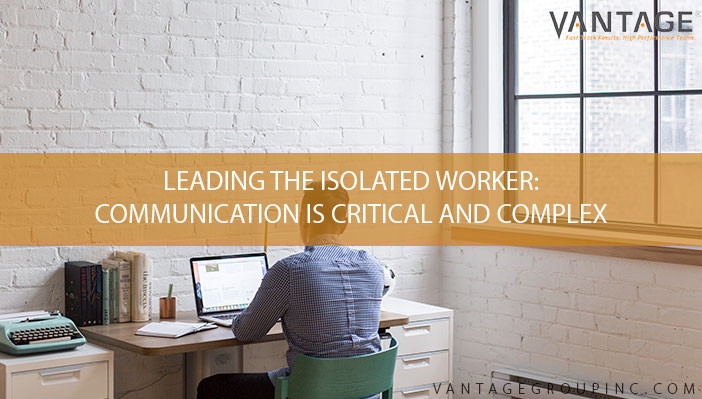With the rise of COVID-19, a high percentage of the workforce in America became remote workers overnight. For leaders whose teams normally share an office, this can present a host of new challenges.
By Missy Jackson, Managing Partner
Humans are naturally social with the innate need to communicate and connect with others. We are also complex and have different communication styles.
Factor in the recent and abrupt changes that have been handed to many of us who typically work face-to-face with colleagues and clients due to the COVID-19 outbreak, and you have a recipe for instability, uncertainty, isolation and chaos. That can feel a bit doom and gloom, but it doesn’t have to be because communication is key to turning chaos into performance.
In the absence of communication, people often create stories in their minds – and they are rarely positive. Without interpersonal communication, feelings of isolation and abandonment are prevalent and performance outcomes tank. Communication is also complicated because each person has different needs.
What does that mean for you as you lead?
It means you need to understand your people; who they are and what their preferred communication style is for unleashing high performance.
The most common communication traits we label each other under are introverts and extroverts. While understanding the differences between introverts and extroverts is important when leading individuals, especially in these new and unexpected circumstances, it can also be limiting to reduce these traits to just two categories.
Within these communication styles, there are layers of additional differences that make each person the unique contributor to your team you have come to know. These differences are what often contribute to whether someone thrives or struggles in new environments and circumstances. During times of uncertainty, with new working conditions, altered expectation for the pace of work and cadence of communication amongst teams and team members, understanding these different personality and communication styles is critical for unleashing your team’s full potential and resiliency.
Within the introvert and extrovert traits, there are four common communication and behavior styles.
Faster-paced, task-oriented problem solver
Ideal environment: freedom from controls, supervision and details. An innovative environment where evaluation is based on results. Situations that present challenges and opportunities. Quick moving environment devoid of small talk and distractions.
Faster-paced, people-oriented communicator
Ideal environment: high degree of people contact. Ability to establish a network of contacts and the need to interact regularly.
Slower-paced, people-oriented relater
Ideal environment: stable and predictable environment where long standing relationships are developed. Prefers situations where change occurs gradually and standards are established.
Slower-paced, task-oriented analyzer
Ideal environment: thrives in situations that require critical thinking and analyses. Prefers scenarios where noise and people are at a minimum and where standards and quality are valued and prioritized.
Keep in mind the team members and colleagues you relate with these behaviors. How well you deploy communication tactics to align with them? Are you implementing the right strategies to engage them? Where do you struggle? Where do they struggle?
While you may be able to get some ideas by aligning your people to each of these categories, the truth is, many are a combination of these styles. We often meet with businesses who struggle to keep their employees engaged in new working environments and refrained from feeling isolated, all while trying to keep business moving forward.
We recommend using individual and team assessments to offer more insight to develop a solid communication plan for your team to thrive. Not only will it unlock the necessary insights you need to be successful today it will lead you down a path to be even stronger tomorrow.

